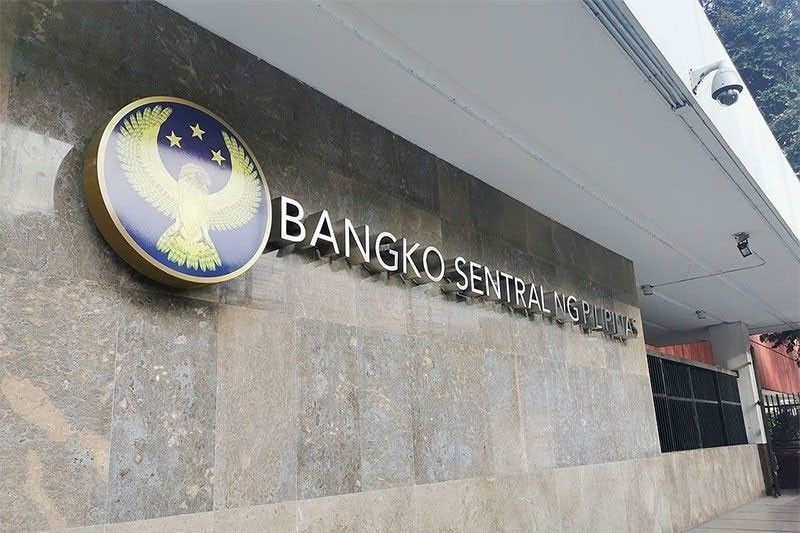BSP keeps rates steady

Vows to maintain tight policy setting
MANILA, Philippines — Coming off a recent 25-basis-point off-cycle hike late last month, the Bangko Sentral ng Pilipinas (BSP) decided to hit the pause button as it kept interest rates steady, but vowed to keep monetary policy settings tight until a sustained downtrend in inflation becomes fully evident.
BSP Deputy Governor Francisco Dakila Jr., in a press conference, said that the central bank’s Monetary Board decided to keep the target reverse repurchase rate unchanged at 6.50 percent, the overnight deposit rate at six percent and the overnight lending rate at seven percent.
Dakila said the latest projections indicate that the inflation outlook has moderated over the policy horizon, prompting the BSP to lower its risk-adjusted inflation forecasts to 6.1 percent from 6.2 percent for this year, 4.4 from 4.7 percent for 2024, and 3.4 percent from 3.5 percent for 2025.
“The latest projections indicate that the inflation outlook has moderated over the policy horizon,” he added.
He pointed out that supply-side inflation pressures continue to ease due, in part, to the national government’s non-monetary interventions as well as seasonal factors.
According to Dakila, the Monetary Board continues to support the government’s efforts to sustain growth through programmed spending as well as non-monetary intervention measures to mitigate the impact of lingering supply-side factors on inflation.
The risk-adjusted inflation is equivalent to baseline inflation forecasts plus the probability weighted impact of the different upside and downside risks to inflation outlook.
On the other hand, the BSP baseline inflation forecasts were raised to six percent from 5.8 percent for this year and to 3.7 percent from 3.5 percent for 2024, but lowered to 3.2 percent from 3.4 percent for 2025.
This means that upside risks have somewhat dissipated.
“Nevertheless, the balance of risks to the inflation outlook still leans significantly toward the upside, notwithstanding the recent improvement in food supply conditions,” Dakila said.
Inflation averaged 6.4 percent from January to October this year, still above the BSP’s two to four percent target range. It eased significantly to 4.9 percent in October after picking up pace for two straight months to 5.3 percent in August and 6.1 percent in September.
The BSP official noted that the rebound of the gross domestic product (GDP) growth to 5.9 percent in the third quarter after slumping to 4.3 percent in the second quarter from 6.4 percent in the first quarter supports the view that the country’s medium-term growth prospects remain largely intact, even as pent-up demand continues to diminish in the near term.
He said the BSP would also continue to assess how firms and households are responding to tighter monetary policy conditions, especially as credit growth continues to moderate.
“Given these considerations, the Monetary Board noted that keeping the policy rate steady will allow previous policy interest rate adjustments, including the interest rate increase in October, to continue to work their way through the economy.
Dennis Lapid, officer-in-charge of the BSP’s Department of Economic Research, said the upside risks are associated with the potential impact of higher transport charges, electricity rates and international oil prices, along with higher-than-expected minimum wage adjustments in areas outside the National Capital Region.
Meanwhile, Lapid said the impact of a weaker-than-expected global recovery, as well as government measures to mitigate the effects of El Niño weather conditions could reduce the central forecast.
“The outlook for inflation has moderated and support keeping the policy rate unchanged. However, significant upside risks to the outlook require continued vigilance and readiness to resume monetary action as needed,” Lapid said.
The BSP Monetary Board has raised key policy rates by 450 basis points, including the 25-basis point off-cycle hike last Oct. 26, to tame inflation and stabilize the peso.
He pointed out that keeping monetary policy settings unchanged would allow previous policy interest rate adjustments to continue to work their way through the economy.
“BSP will keep monetary policy settings sufficiently tight until a sustained downtrend in inflation becomes fully evident and inflation expectations are firmly anchored,” Lapid added.
China Bank chief economist Domini Velasquez said the Monetary Board most likely reached its peak already at 6.50 percent as the inflation outlook improves.
“We still maintain our view that the BSP might hold its target policy rate at 6.50 percent until Q4 next year, given that inflation will likely print above the target until the second half of the year,” Velasquez said.
Aris Dacanay, economist for ASEAN at HSBC, said the BSP remains hawkish after a pause, even as it signaled readiness to hike policy rates if an inflation shock reignites second round effects.
“With the domestic economy returning back to balance, we expect the BSP to keep policy rates steady until inflation credibly returns to target by Q3 2024,” Dacanay said.
According to Dacanay, rate cuts are off the table until the third quarter of next year when the US Federal Reserve is expected to begin slashing interest rates.
- Latest
- Trending


























